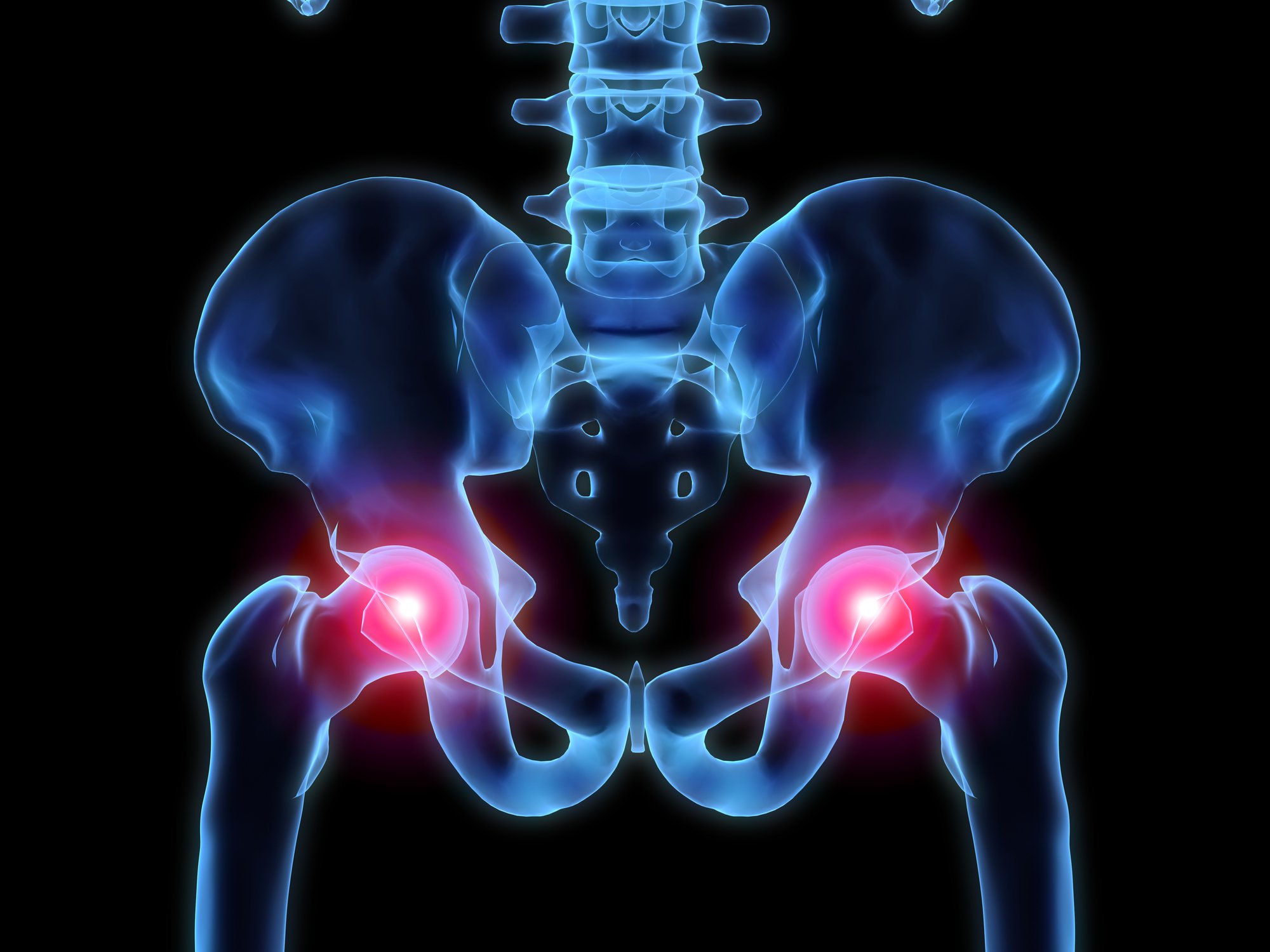
THE Hip
The hip is a ball-and-socket joint where the femur (thighbone) meets the pelvis, providing stability and a wide range of motion for activities like walking, running, and bending. The "ball" of the joint is the femoral head, and the "socket" is the acetabulum, a part of the pelvis. This joint is surrounded by ligaments, tendons, and muscles that work together to provide movement and support. Cartilage within the joint acts as a cushion, reducing friction and allowing for smooth, pain-free motion. The hip is one of the body's largest weight-bearing joints and plays a crucial role in maintaining balance and mobility.
Injuries or degenerative conditions such as arthritis, labral tears, or fractures can severely impact the hip's function, leading to pain, stiffness, and reduced mobility. Orthopedic surgeons specialize in treating a range of hip issues, from conservative treatments like physical therapy and medications to more advanced interventions such as hip arthroscopy, joint preservation procedures, and total hip replacement surgery. The goal of hip surgery is to alleviate pain, restore function, and improve the patient’s quality of life, allowing them to return to daily activities and maintain an active lifestyle.
Some of the most common Hip conditions include:
Hip Osteoarthritis
Hip Fractures
Hip Bursitis
Hip Labral Tear
Femoroacetabular Impingement (FAI)
Hip Dysplasia
Avascular Necrosis (AVN)
Trochanteric Pain Syndrome
Snapping Hip Syndrome
Hip Tendonitis
COMMON CONDITIONS
Hip Osteoarthritis
Hip osteoarthritis is a degenerative joint condition that occurs when the protective cartilage cushioning the bones in the hip joint gradually wears away. This leads to bone-on-bone contact, causing pain, stiffness, and decreased mobility. Osteoarthritis in the hip often develops slowly, with symptoms becoming more severe over time. Patients typically experience discomfort during activities like walking, standing, or climbing stairs, and in advanced cases, even rest can become painful. The condition is more common in older adults and can be influenced by factors such as age, obesity, genetics, and previous joint injuries.
When conservative treatments such as physical therapy, anti-inflammatory medications, and lifestyle changes fail to provide relief, orthopedic intervention may be necessary. An orthopedic surgeon may recommend total hip replacement surgery (hip arthroplasty), where the damaged joint surfaces are replaced with artificial components. This surgery can significantly reduce pain and improve mobility, allowing patients to return to daily activities with enhanced quality of life. With proper rehabilitation and follow-up care, most patients experience long-lasting relief from symptoms.
Femoroacetabular Impingement (FAI)
Femoroacetabular impingement (FAI) is a condition where abnormal bone growth on the femoral head or the acetabulum (hip socket) leads to friction in the hip joint. This friction can cause damage to the cartilage and labrum, resulting in pain and restricted hip movement. FAI is often seen in young and middle-aged adults, particularly athletes, and can develop due to repetitive stress or abnormal hip joint formation during growth. Symptoms include pain in the groin or hip area, stiffness, and a limited range of motion, especially during activities that involve bending or twisting.
Orthopedic treatment for FAI typically begins with non-surgical options like physical therapy, activity modification, and anti-inflammatory medications. However, if these treatments do not alleviate symptoms or if the condition progresses, surgical intervention may be necessary. Hip arthroscopy, a minimally invasive procedure, is commonly used to reshape the bones and repair any damage to the labrum or cartilage. This surgery can help restore normal hip mechanics, reduce pain, and prevent further joint damage, allowing patients to return to an active lifestyle after a structured rehabilitation program.
COMMON PROCEDURES
Total Hip Replacement (Hip Arthroplasty)
Total hip replacement, also known as hip arthroplasty, is a surgical procedure in which the damaged or worn-out parts of the hip joint are replaced with artificial components. This procedure is most commonly performed for patients suffering from severe hip osteoarthritis, rheumatoid arthritis, or hip fractures. During the surgery, the surgeon removes the damaged femoral head and replaces it with a metal or ceramic ball that fits into a prosthetic socket implanted into the pelvis. The goal of hip replacement is to relieve chronic pain, improve joint function, and restore mobility, allowing patients to return to their daily activities without discomfort.
Recovery from total hip replacement typically involves a hospital stay followed by a comprehensive rehabilitation program, including physical therapy to regain strength and flexibility. Most patients experience significant pain relief and improved mobility within a few months of surgery. While hip replacements are designed to last for many years, they may eventually wear out and require revision surgery. However, modern advancements in prosthetic materials have extended the lifespan of hip implants, making hip arthroplasty a highly successful and durable solution for those suffering from debilitating hip conditions.
Hip Arthroscopy
Hip arthroscopy is a minimally invasive procedure used to diagnose and treat a variety of hip conditions, such as femoroacetabular impingement (FAI), labral tears, and cartilage damage. During the procedure, the surgeon inserts a small camera, called an arthroscope, into the hip joint through tiny incisions. This allows the surgeon to view the inside of the joint and perform repairs using specialized instruments. Hip arthroscopy is often recommended for younger or more active patients who are experiencing hip pain but want to avoid the more extensive recovery associated with open surgery.
One of the main benefits of hip arthroscopy is the shorter recovery time compared to traditional surgery. Since the incisions are small, there is less trauma to the surrounding tissues, resulting in less post-operative pain and quicker rehabilitation. Patients can usually resume normal activities within a few months, depending on the extent of the surgery and their adherence to physical therapy. While hip arthroscopy is effective for addressing certain hip issues, it is not suitable for advanced arthritis or severe joint damage, where more invasive procedures like total hip replacement may be necessary.
